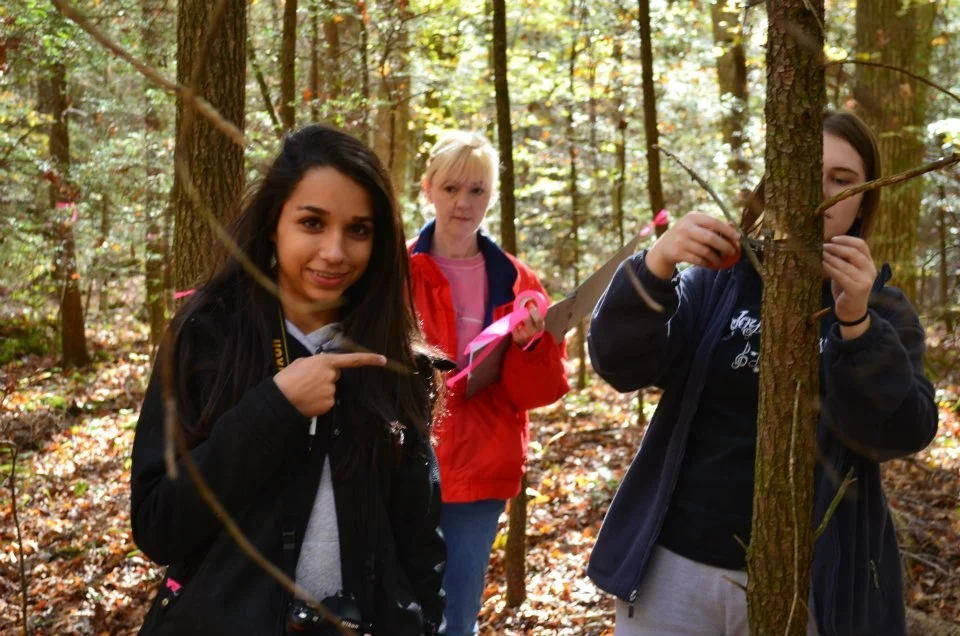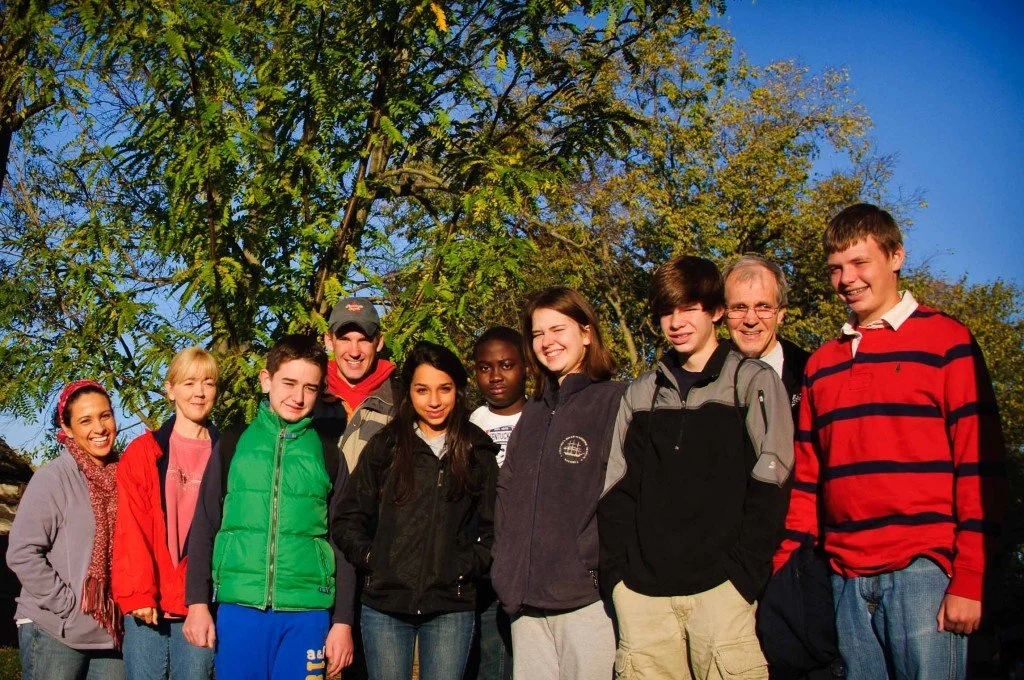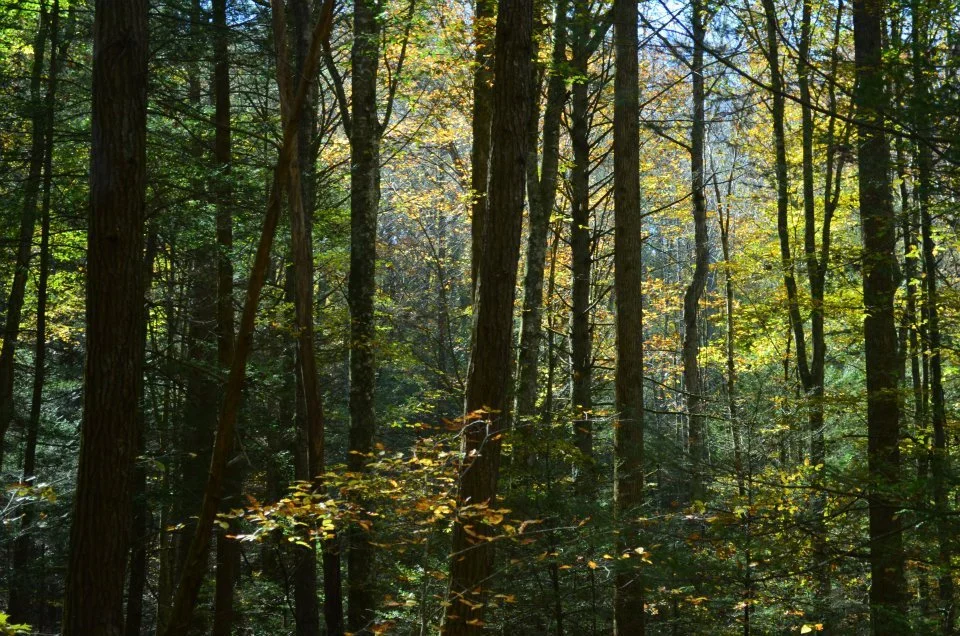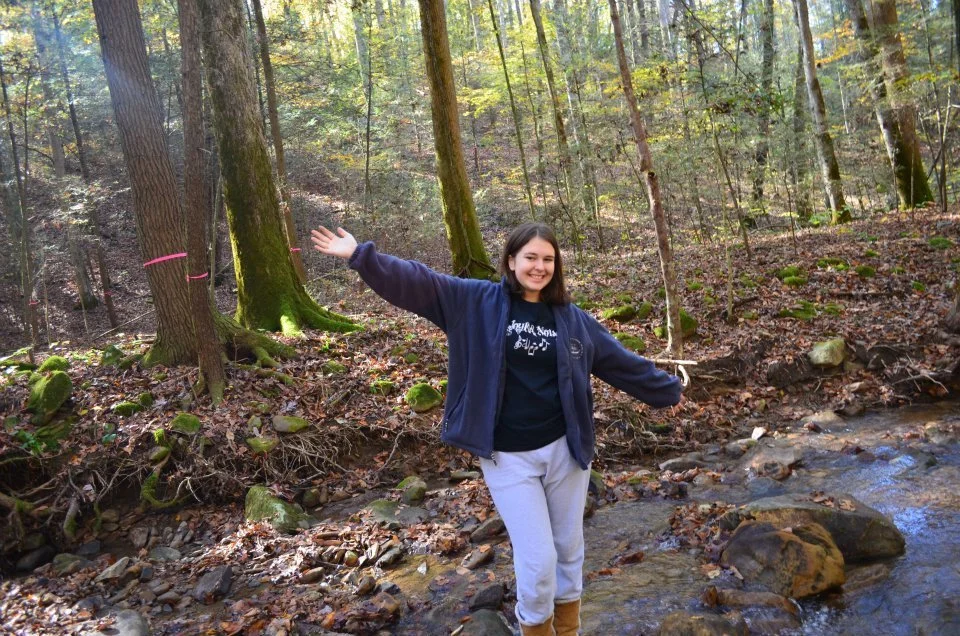Save Our Hemlocks
“I go among trees and sit still.” Thus begins Wendell Berry’s cycle of “Sabbath Poems,” conceived and written, according to Berry, in silence, solitude, and often in the outdoors. Berry’s reflection flows naturally from the directive of Psalm 46 to “be still and know that I am God.” On October 22, 2011, a small group of teens and adults from the St. Paul Parish youth group traveled to Kentucky Ridge State Forest in Bell County. There we partnered with the Kentucky Division of Forestry, under the leadership of Alice Mandt, for a day of education about the hemlock, and a service project in partnership with the Division of Forestry as a part of its ongoing “Save the Hemlocks” work. St. Paul Parish gratefully acknowledges the generous support provided by Blessed Earth for this project. The reality and majesty of God are dramatically discernable in the lush woods of the Daniel Boone National Forest, and notably, for countless outdoor enthusiasts, in the Big South Fork and Red River Gorge areas. These areas are famous worldwide for the beautiful vistas, rock formations, and waterfalls, all complimenting the general beauty of the forest itself. It is difficult and painful to imagine these majestic woods without the Eastern Hemlock tree, but the present risk to Kentucky’s 70 to 80 million hemlocks is both real and grave.
The Eastern Hemlock, up and down the Appalachian range, is at grave risk due to infestation of the Hemlock Wooly Adelgid (HWA), a non-native insect brought to the United States from Asia, and which has no natural predator in the eastern United States. The HWA is having a devastating impact. Large areas of formerly lush forest in North Carolina and Tennessee have turned brown, as the HWA has exacted its toll on the hemlock. The National Park Services has written on its website, describing the situation in Great Smoky Mountain National Park, that “without successful intervention, the Hemlock Wooly Adelgid is likely to kill most of the Hemlock trees in the park.” The hemlock plays a vital role in our ecosystems. For example, the shade provided by extensive hemlock canopies impacts water temperature in many mountain streams. Absence of this shade, coupled with soil erosion resulting from loss of the many streamside hemlocks, could quite conceivably have such an adverse impact on water clarity and temperature, that a number of these mountain streams that presently support trout populations would no longer be able to do so. Thus, as is often the case in nature, loss of the hemlocks will have a substantial ripple effect far beyond the simple but tragic loss of the millions of beautiful and majestic trees themselves.
Our teens and adults were instructed on identification of hemlocks appropriate for marking, and how to mark and measure the trees, which would later receive a chemical treatment to rid the tree of the HWA. Our teens and adults entered into this project enthusiastically, and through the day’s work approximately 350 hemlock trees were identified, marked, and treated, creating a temporary firewall against the ravages of the HWA in at least one small area of Kentucky forest. Perhaps of greater importance than the trees preserved through the day’s work was the awareness created on the part of our teens, and their desire, at the end of the day, to return for at least another day of work in the woods in support of the hemlock. Our youth group does plan to partner with the Division of Forestry again in the Spring for a similar project. Our hope is that the support and number of participants for “round 2? will be substantially greater. If any reader has a desire to be a part of this upcoming project, please contact me.
Thomas Merton once wrote that “all creation teaches us some way of prayer.” My involvement with and reflection on the hemlock problem has taught me to pray with a renewed sense of thanksgiving and awe for the great gift of creation itself. It has taught me to pray with sorrow and contrition for humanity’s historically poor performance as stewards of our earth. It has further taught me to pray for a will and a heart resolved to henceforward be a consistently better steward of God’s creation. Even under the most optimistic of scenarios, it appears highly probable that we are going to lose a great majority of our hemlocks. There remains sufficient time to make a difference, so please consider doing something meaningful in support of the hemlock, whether it be advocacy, financial support, or through volunteering some time and labor. Perhaps all of the above? If enough people support this effort, we can preserve substantial pockets of hemlocks where we, our children, and our children’s grandchildren, can “go among trees and sit still,” in the continued presence of the Eastern Hemlock. (Author pictured below, second from the right. picture by Geoff Maddock)
Chuck McQueen is the Coordinator of Youth Ministry at St. Paul Parish in downtown Lexington, KY. Blessed Earth partnered with Chuck and the St Paul youth by helping fund this day of service with the Kentucky Division of Forestry. He can be contacted at abmqueen@wspmlaw.com.




